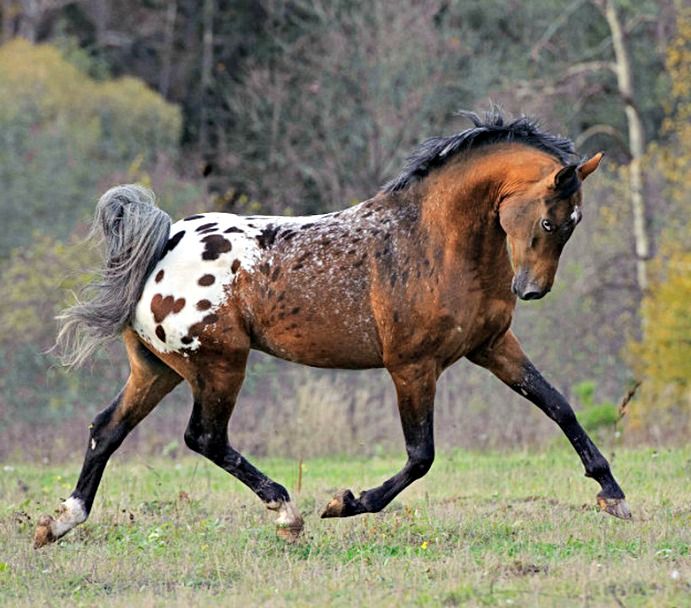
Tiger horse(Origin, Characteristics, Facts & More)
- HEIGHT: 13–16 hands, with 14–15.2 hands being most typical and desirable
- PLACE OF ORIGIN: Northwestern United States
- SPECIAL QUALITIES: A rare gaited breed with Appaloosa color patterns
- BEST SUITED FOR Trail riding, ranch work, pleasure riding; good horses for riders with physical limitations
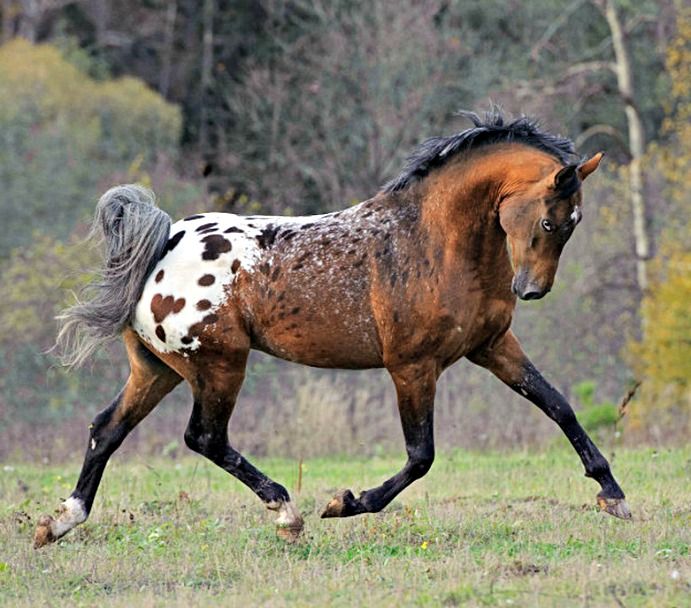
Contents
Information About Tiger Horse
Tiger Horses have spots, not stripes. The name Tiger Horse comes from the Spanish word Tigre, which refers to cats with patterned coats, not just tigers. Horses with leopardlike spotted coats occur or have occurred almost everywhere horses are found, from China and Siberia, across the Russian steppes, throughout Asia, and in Europe from Norway to Spain, from where they were brought to the Americas.
There are records of them in works of art going back thousands of years. In some places, the color patterns have simply been observed, in other places they have been treasured, and in some places they have fallen in and out of fashion. Leopard-patterned horses, now often now referred to as leopard-complex horses for the gene group that causes the color pattern, were a fad in Spain, Holland, Germany, Denmark, Austria, and France during the 1700s, but toward the end of that century, the fad waned. Boatloads of spotted horses were subsequently shipped off to Mexico, California, and the colonies.
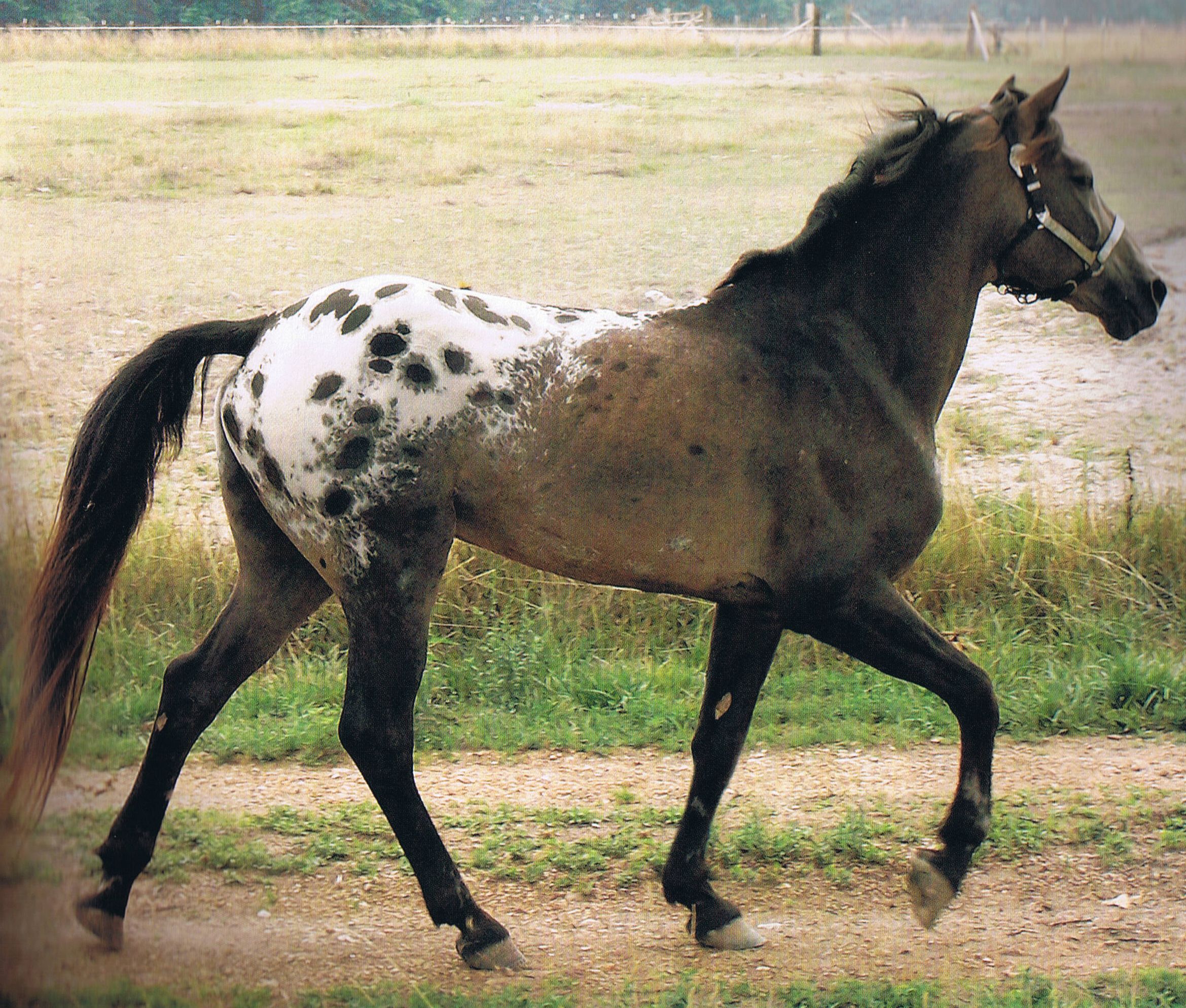
In the New World, in places where the influence of the mostly solid-colored English was strong and in fashion, the wild-colored horses were traded off, often to Canada.
Various native peoples admired loud colors, and they acquired such horses whenever they could. The Ni Mee Poo (Nez Percé) of the Northwest particularly valued the spotted horses and featured them in their breeding programs, which were quite sophisticated.
The tribe was so closely associated with these horses that it is often reported as having developed them. The Ni Mee Poo themselves deny this, but controversy still remains. The Ni Mee Poo acquired some horses from Canadian traders, and there are also stories from the oral tribal history of special “Ghostwind” stallions bought from Russian traders.
The horses were pushed off boats and tribesmen swam them ashore. Historical evidence indicates that the story is true, but adds the information that the Russians obtained these decidedly Spanish-type horses in California from established ranches.
The Ni Mee Poo had well-established herds of excellent horses, many with spotted coats, by the time Lewis and Clark encountered them in 1804.
Meriwether Lewis, a horse breeder himself, recognized high-quality animals when he saw them.
He was very favorably impressed with the horses of the Ni Mee Poo, saying in his notes that they compared well in form and fleetness of foot with the blooded horses of Virginia.
In addition to the color, the most notable trait of these Tiger Horses was their willingness and ability to perform a smooth, intermediate four-beat gait that came to be known as the “Indian shuffle.”
This gait was so much easier on the horse, rider, and even equipment that cowboys of the time are reported to have paid $50 more for a “shuffler” than for an ordinary horse, and this was in the days when a good broke cow pony cost about $30.
Horses with colorful patterns, like this Tiger Horse, have occurred throughout recorded history and all over the world. This breed’s gaits include the “Indian shuffle,” an intermediate four-beat gait.
The origin of the gait in this country goes back to the Spanish Jennet, which is credited with being the ancestor of all North American gaited breeds. Furthermore, for quite a long time Spanish Jennets were known to come in wild color patterns.
At the time of Lewis and Clark, horses in the colonies showed the influence of the smooth-gaited English Hobby and Narragansett Pacer, both of which had a strong Spanish Jennet heritage. Through trading, escapes, theft, and sales, the bloodlines of these horses were also randomly incorporated into the Tiger Horses.
On the Brink
The 1887 war between the United States Army and the Ni Mee Poo resulted in the conquest of the tribe and its relocation, as well as the nearly complete dispersal or destruction of its horse herds. But a few small pockets of the horses remained in the Pacific Northwest.
They had been well distributed by trade with various tribes, and some ranchers either owned a few or held them in trust for the eventual return of the Ni Mee Poo. In 1938, Claude Thompson, an Oregon farmer, established a registry to preserve the spotted horses then believed to have been developed by the Ni Mee Poo.
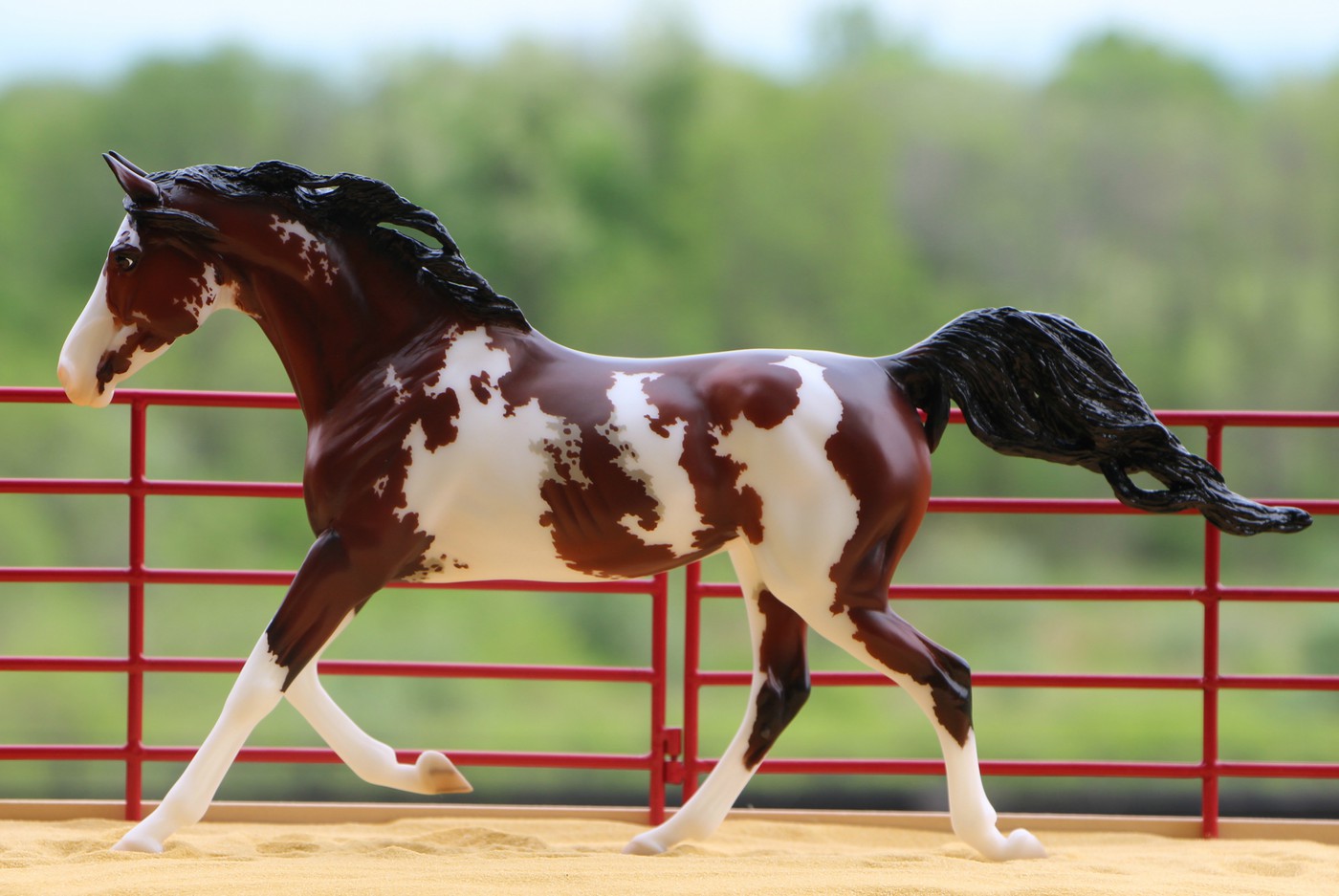
The Appaloosa Horse Club that Thompson founded brought attention to the horses and prevented their extinction but over the years this organization allowed crossbreeding to Quarter Horses, Arabians, and Thoroughbreds, which eliminated some of the original characteristics of the Tiger Horse, especially the gait.
A few of the original Tiger type remained in Canada, in remote areas of the Pacific Northwest, and on some ranches. In addition, a number of breeders of “foundation” Appaloosas have regularly produced horses of the old Spanish type with the characteristic four-beat gait.
The Tiger Horse Registry, known as Tigre, was founded in 1990. This organization strives to reproduce as closely as possible the famous horses from ancient Siberia, but with a contemporary American flair.
Since the original horses are extinct, they rely on horse types that were developed in the New World but which obviously exhibited some of the ancient ancestors’ phenotype.
To this end, they emphasize the palomino color and the sabino pattern gene, as well as the leopard complex of genes. They put primary emphasis on disposition, followed by conformation, gait, and color.
Early in the development of the organization, a rift regarding the registry’s philosophy led to the formation of the entirely different Tiger Horse Association, founded in 1994 to preserve and perpetuate what was left of the original Tiger-type horses.
Owners and breeders of this group are trying to find and register as many of the horses that resemble the old type as possible in order to guarantee their survival.
To ensure that the organization stays along its carefully chosen course over the long term, it works closely with members of the Ni Mee Poo tribe and with Dr. Phillip Sponenberg and Dr. Gus Cothran, horse geneticists who are experts in rare breeds, the early Spanish horses, and techniques of managing small populations. They have also worked with Dr. Deb Bennet, a horse historian.
The group has carefully developed the breed standards and genetic requirements for registration that will ensure the long-term genetic health of the population. They began by registering horses with the leopard-complex coat patterns, an intermediate four-beat gait, and at least some Spanish conformation characteristics.
Registered horses may be Appaloosa, Spanish Mustang, any of the Paso breeds, some of the lesser-known breeds of Spanish descent such as the Florida Cracker, as well as Native American herds.
Since the ability to perform the gait has been actively bred out of most leopard-complex horses, the Tiger Horse Association recognizes the need for occasional outside gaited blood to be brought in. All outcrossing is for one generation only, and only to individual horses approved by the association. Foals resulting from such crosses have an O put at the end of their registration number. These O horses may be bred back only to registered horses or to other O horses to produce eligible foals. Wholesale outcrossing is not allowed.
Breed Characteristics
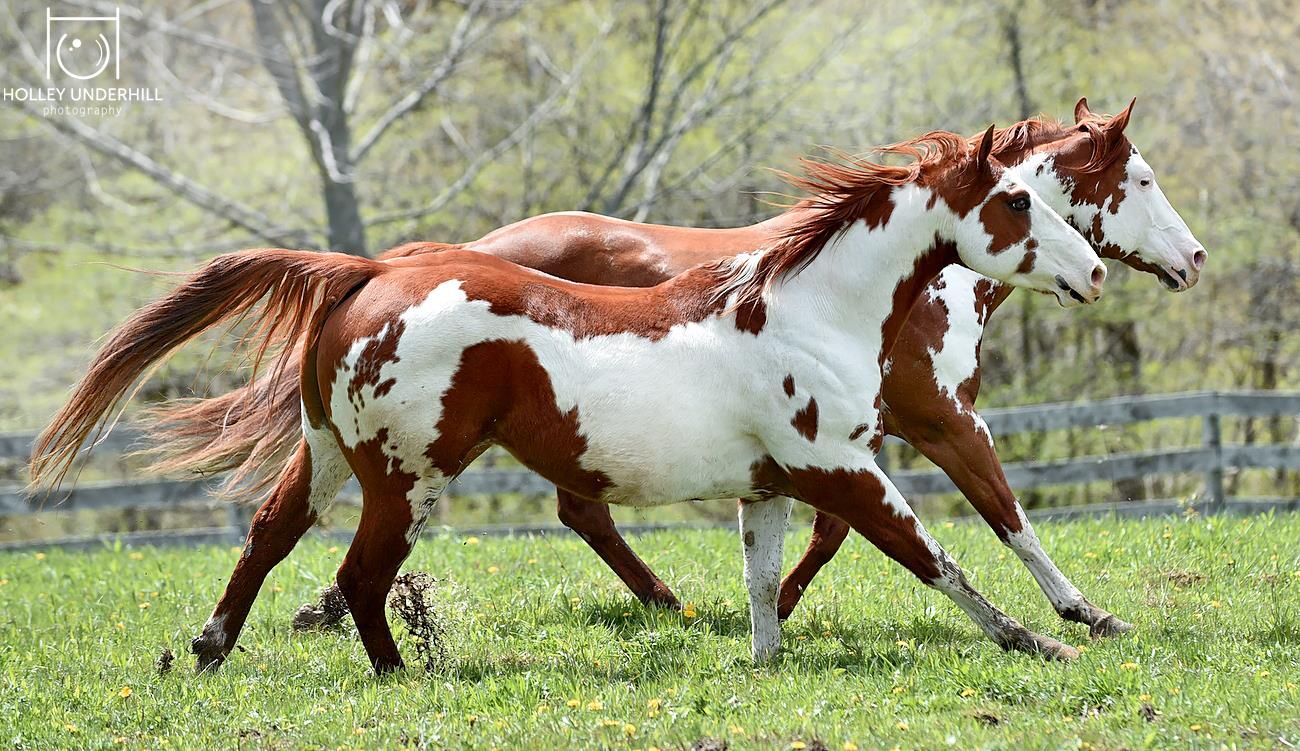
Both breed associations agree that Tiger Horses are expected to be gentle and sensible, with excellent learning capacity and great heart. In addition to a walk and canter, a Tiger Horse must perform an even, natural, four-beat gait.
The Tiger Horse Association adds that they also often demonstrate the controlled spirit and pride known in Spanish as brio. Tigers make a good trail and ranch horses as well as excellent pleasure riding horses. Like other smooth-gaited breeds, they are a good choice for riders with physical limitations.
Confirmation
According to the Tiger Horse Association, the ideal Tiger Horse should be a colorful, gaited, light horse that is well balanced and sturdy, without extreme muscling. Height ranges between 13 and 16 hands, with 14 to 15.2 hands being most typical and desirable.
The ears are of medium length, curved and notched, mobile, and alert. The eyes are large and prominent, with the white sclera. Viewed from the front, the head should look lean and show no cheekiness.
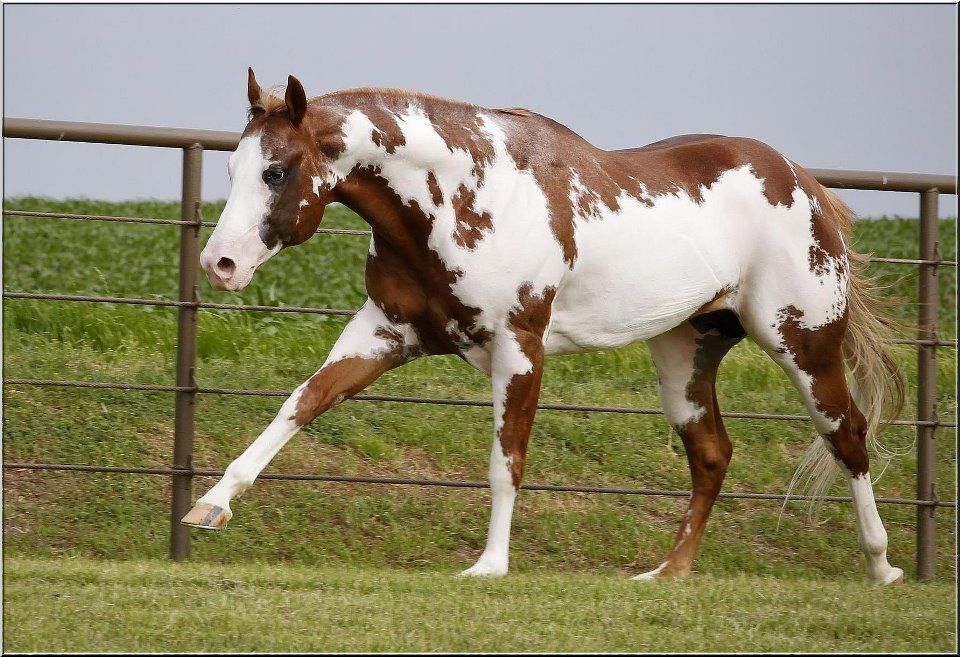
The eyes should be widely spaced, the forehead broad and flat and tapering to a fine muzzle with large sensitive nostrils. The profile may be straight or slightly convex, but in the ideal, the convex curve does not extend as far up as the eyes. A concave or dished profile is neither typical nor desirable, nor is a Roman nose.
The breed’s colorful patterns include leopard (left) and roan (right).
The neck should be high set, moderate to long, well balanced, blending smoothly into the withers, and well arched, with a clean throatlatch. The withers should be well defined, with sloping shoulders; the ideal angle is 45 degrees. There should be a good depth of heart girth.
The legs should be straight and long with large, clean joints. The cannons should be relatively short. Viewed from the front, the chest should be of medium width, frequently with a well-defined V between the forelegs. Muscling of the forehand should be long and flat. The back should be short-coupled and strong, with a sloping croup and low-set tail.
Viewed from behind, the thighs should be fairly flat without bunchy muscling that gives the appearance of an “apple-” or “heart-shaped” rear. The pasterns should be of moderate length, strong, and flexible. The hooves should be dense, resilient, and substantial, and are usually striped.
Neither toes nor heels should be particularly long. Mane and tail hair can range from nearly nonexistent to extremely long and full, but must always be completely natural.
Color
The Tiger Horse can be of any base color, though ideally, Tiger characteristics and coat pattern should be present. These characteristics are white sclera, striped hooves, and mottled skin. Common coat patterns are leopard, blanket (with or without spots), roan (with or without spots), and snowflake. Horses with the graying gene or any pinto gene are not acceptable.
BREED ASSOCIATION FACTS AND FIGURES
According to the Tiger Horse Association Inc. (founded in 1994):
• There are 45 registered horses.
• The number of new foals in an average year varies from zero to as many as eight.
According to Tigre, the Tiger Horse Registry (established in 1990):
• There are 50 registered horses of this type.
• Three to 5 new foals are registered each year.
• These horses are not concentrated in any one geographical region. There is one in Germany.
